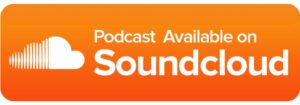A study of 1,000 employees conducted by Adobe revealed that people, on average, spend five hours a day checking email. This time includes the checking of work and personal emails. The five hours does not even account for additional communication channels like instant messaging, video conferencing, and team collaboration tools. Your employees, whether returning to the office or still working at home, are managing a variety of messaging. Consequently, it is easy for constant communications to overburden your staff.
Communication overload can lead to a loss of productivity, burnout, and workers feeling that they don’t have a clear idea of what is a priority. Dealerships can be fast-paced, and the goal should be to ensure that messaging is efficient and leads to a more straightforward workflow.
Below are some steps you can take to help you create a strategy for managing messaging at your dealership to prevent communication overload.
Know and Convey the Difference Between Asynchronous and Synchronous Communication 
These words are commonly used in remote work sectors. Nevertheless, their meanings are simple: asynchronous communication systems include a lag of time between responses (ex. email), while synchronous communication mediums allow for immediate feedback (ex. instant messaging apps). Understanding these communication systems and how they work can help you set parameters for messaging that is most appropriate for both. For example, let’s say an urgent customer complaint issue has arisen. You would likely use a synchronous system to convey that this problem deserves priority. For something less serious, email would be appropriate. Help your employees walk through situations to determine urgency and select the proper channel to use at the time.
Determine Who Needs to Be Included in Messaging
You may be tempted to use a “better safe than sorry” approach to messaging. However, this can backfire as sending out company-wide memos that only pertain to one department, or a few individuals can be a distraction. Ultimately, they can result in messaging apathy among your team. So, only send communications to those who need to receive it. If you have an issue that solely relates to the service department, don’t send it to accounting or marketing. This action will only serve to distract your team and cause them to lose time in the long-run.
Personalize Your Messaging
Okay, let’s say that the email that was sent to the service department has messaging that involves your marketing and accounting team. This situation is where it is crucial to personalize messaging. Instead of sending out a mass email that requires each team to sift through information that relates to them within the message, only send them communications that pertain to them directly. It will free up their time, and they will be more likely to trust that an email sent from you is one that they should read.
Allow Meetings to Take the Place of In-Person Walk-Ups
If you work in the office with others, it may be tempting to go up to a colleague to ask questions or seek feedback. Nevertheless, according to a University of California Irvine study, it takes workers over 23 minutes to recover after a distraction in the workplace. So, see if you can avoid unplanned walk-up meetings by scheduling stand-up meetings or collaboration sessions throughout the week. This step allows you to establish some structure around in-person communications and gives your employees time to ask questions of leadership and their colleagues. Employees may not feel as pressured to interrupt one another during the workday if they know they have a meeting that allows them to get all their questions answered.
Related: 15 Ways to Improve Communication in the Service Drive
Help Employees Decide Between Urgent and Non-Urgent Communications
Many communication problems stem from everyone thinking that their current work situation could be an emergency that requires an immediate response. An urgent work situation can look different for everyone, especially by the department. However, employees and even leadership must understand how important it is to schedule times to talk with colleagues instead of waiting for an immediate response through email or walking up to someone’s desk. Accordingly, you can help employees walk through situations that deserve an emergency walk-up and those that can wait until a scheduled meeting.
Keep Your Messaging Short and Pointed
Email memos and instant messages should not include paragraphs of information. Even meetings should be short and manageable. It is vital to get your news across; however, the longer the message, the less likely it is for your team to read through everything. You want to make sure that employees only receive information crucial for them to know at that time. To prevent long email or digital messages, you may want to combine communication channels like video or in-person meetings to elaborate on points and answer questions. Again, the goal is to keep your messages short and concise.
The Right Messaging Can Promote Greater Productivity
It is easy to get caught up continually checking email, heading to multiple meetings, or staying up-to-date with Slack messages. However, while it is great to have some variety in how everyone communicates, you have to get a handle on how these channels are used. Most of the day can go to talking about projects instead of completing them. You want these communication methods to work for you and your team, not against you. So, be sure you are planning to organize how you and your team communicate with one another and establish protocols to prevent communication overload.
Did you enjoy this article from Chanell Turner? Read other articles from her here.
Car Biz Today, the official resource of the retail automotive industry.


While you’re here, don’t forget to subscribe to our email newsletter for all the latest auto industry news from CBT News.
This has been a JBF Business Media production.








